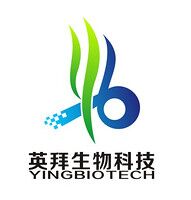Human Cancer Drug Targets ChIP PCR Array
|
|
|
The Human Cancer Drug Targets EpiTect Chip qPCR Array profiles the histone modification status or “histone code” of 84 actively sought targets for anticancer therapeutics and drug development. Histone modifications define chromatin structure, and some correlate closely with the transcriptional activity of associated genes. In vitro screening of therapeutics for a given cancer type increasingly depends on not only the activity, but also the expression and epigenetic status of oncogenes. For example, histone deacetylase (HDAC) inhibitors induce tumor suppressor gene expression, slowing growth and proliferation, but could also increase oncogene expression. The choice to add HDAC inhibitors to a drug regimen can depend on the histone codes of the two gene classes. Cancer cells with oncogenes in a heterochromatin state may respond better to HDAC inhibitor treatment because these genes would not be expressed or easily induced. Comprehensively understanding how oncogenes contribute to tumor growth and survival on the molecular level requires a determination of the epigenetic mechanisms regulating their expression. Using chromatin immunoprecipitation and this real-time PCR Array, you can easily and reliably analyze the histone modification patterns associated with a focused panel of important cancer-related genes.
The EpiTect Chip qPCR Arrays are intended for molecular biology applications. This product is not intended for the diagnosis, prevention, or treatment of a disease. |
|
|
|
|
Apoptosis: BCL2, BIRC5.
PI-3 Kinases & Phosphatases: FRAP1 (MTOR), PIK3C2A, PIK3C3, PIK3CA.
Growth Factors & Receptors: EGFR, ERBB2, ERBB3, ERBB4, FIGF, FLT1, FLT4, IGF1, IGF1R, IGF2, KDR, KIT, PDGFRA, PDGFRB.
Drug Metabolism: ABCC1, GSTP1, PTGS2, TXN, TXNRD1.
G Protein Signaling: RHOA, RHOB.
Hormone Receptors: ESR1, ESR2, PGR.
Heat Shock Proteins: HSP90AA1, HSP90B1.
Receptor Tyrosine Kinase Signaling: AKT1, AKT2, GRB2.
Cathepsins: CTSB, CTSD, CTSL1, CTSS.
Cell Cycle: CDC2, CDC25A, CDK2, CDK4, CDK5, CDK7, CDK8, CDK9, MDM2, MDM4, TERT.
Topoisomerases, Type II: TOP2A, TOP2B.
Transcription Factors: ATF2, HIF1A, IRF5, NFKB1, TP53.
Protein Kinases: AURKA, AURKB, AURKC, PLK1, PLK2, PLK3, PLK4, PRKCA, PRKCB, PRKCD, PRKCE.
RAS Signaling: HRAS, KRAS, NRAS.
Histone Deacetylases: HDAC1, HDAC11, HDAC2, HDAC3, HDAC4, HDAC6, HDAC7, HDAC8.
Poly ADP-Ribose Polymerases: PARP1, PARP2, PARP4, TNKS.
Structural Protein: NTN3. |









